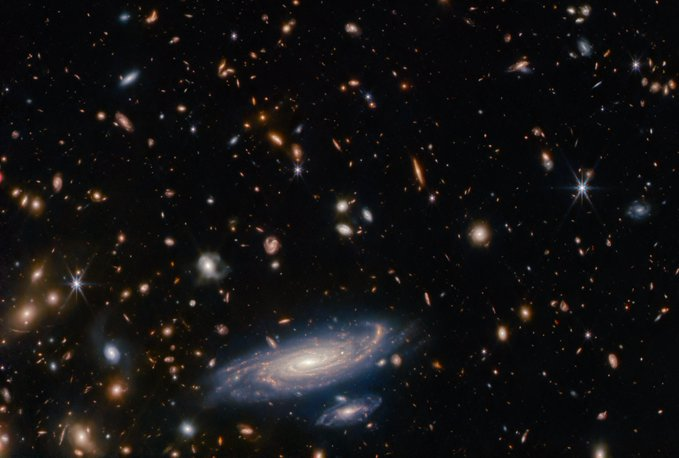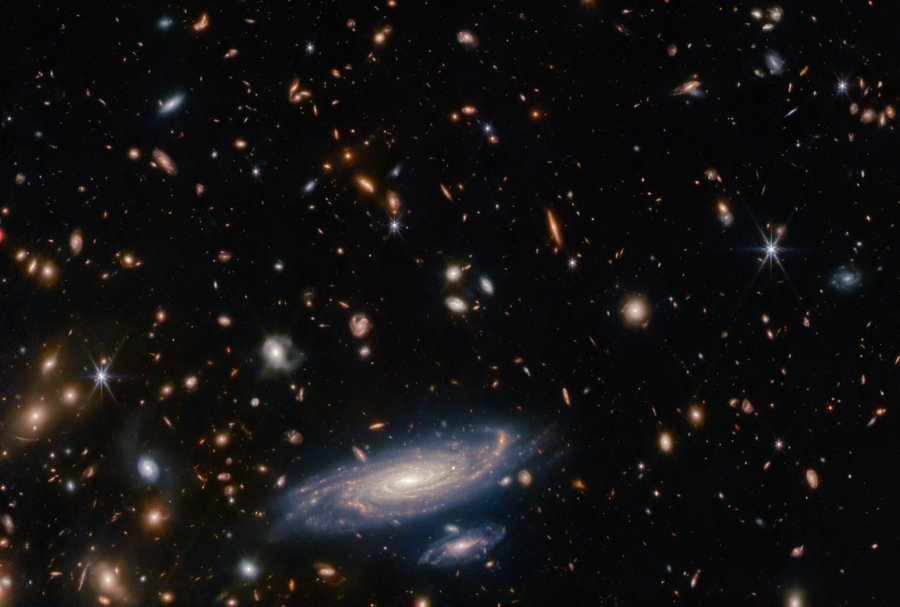James Webb captures a spiral galaxy a billion light-years away from Earth in stunning detail

A newly released image from NASA's James Webb Space Telescope shows a crowded field of galaxies and stars, with a distant spiral galaxy emerging in stunning detail.
The large galaxy, LEDA 2046648, is so visible in the JWST image that its individual spiral arms can be seen.
This level of detail is even more impressive given that the galaxy in question is located in the constellation Hercules, more than a billion light-years away from Earth and the telescope.
The image also shows a group of other galaxies and stars, all marked by the six-pointed "diffraction spikes" that are a signature of James Webb Telescope observations.
The image was taken by the James Webb Near Infrared Camera (NIRCam) while the telescope was observing the white dwarf WD1657+343.

It is noteworthy that the other galaxies in the image are not only smaller than LEDA 2046648, but some of them are also farther away, which provides a deeper view of the history of the universe, which is one of the main goals of James Webb, who monitors distant galaxies, some of which are located at a much greater distance than LEDA 2046648, in order to Looking back in time to the universe when it was in its infancy.
This historical view is possible because light takes a finite time to travel to Earth from distant galaxies, so looking at these galaxies is like seeing them at the time the light left, sometimes as early as 13.8 billion years ago some 300 million years after the Big Bang.
However, the light from these galaxies does not remain constant over its multi-billion-year journey to James Webb's 21-foot-wide (6.5-meter) gold-plated primary mirror.
The expansion of the universe is stretching the wavelengths of this light, reducing its energy from the visible spectrum to infrared light.
This process is known as “redshift,” as it shifts light toward the red end of the electromagnetic spectrum.
This phenomenon makes James Webb's infrared detection capabilities ideal for studying the red light emitted by ancient galaxies, and thus for determining the details of their formation, evolution and composition.
Astronomers can then compare the structure of these ancient, distant galaxies to those we see closer to our galactic home, the Milky Way, in a more recent era of the universe.
The comparison could help reveal how galaxies grew to form the structure we see in the universe today.
In addition, light from distant galaxies helps reveal their chemical composition, showing astronomers how and when heavy elements were formed and how they became more abundant in later galaxies thanks to fertilization from supernovae.
Source : websites

